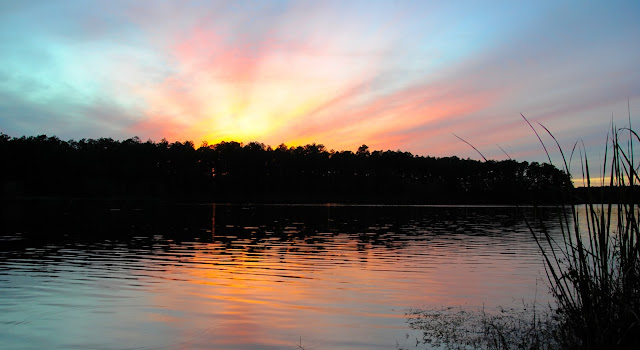Back in May I went out to see some of the aftermath of a controlled burn at Tarkiln Bayou Preserve State Park. Here are some of the shots.
 |
| After a fire, anything that hasn't been burned to ashes (several inches above ground). Is so exposed to the heat that it turns brown and dead. Some of these plants will grow back but, after burning over a few decades (every few years), the weedier species will die off. |
 |
| The fire can't burn if the ground is too wet. Here, wet ground has kept the fire from passing a certain line. Ecologists burn forests to increase biodiversity--it keeps weedy species from getting a monopoly on growing space and offers a chance for more sensitive species to take hold. |
 |
| Mushrooms poke through the ashes almost as soon as the fire is passed, demonstrating that only a few centimeters below the surface, life goes on as normal. Roots and mycelia are unaffected by the blaze. Many species are specially adapted to periodic fires and do much better in their presence. People have been starting controlled fires in America before Europeans arrived on the continent, but for different reasons. Early Americans burned to make hunting and defence easier. In a more open forest, both prey and enemies could be seen from a safer distance. Inadvertently, these tribes and nations created an ecosystem of their own tastes, and animals and plants adapted to survive specifically in a fire-frequented environment. |
 |
| A young six-lined racerunner makes the most of the fringes of the burn. Bugs are easy to spot out here. |
 |
| My favourite species of carnivorous plant, Drosera tracyi. The long, delicate leaves curl around stuck insects that blundered into the sticky droplets of dew. The black specks here are gnats that will soon be digested by the plant. |








